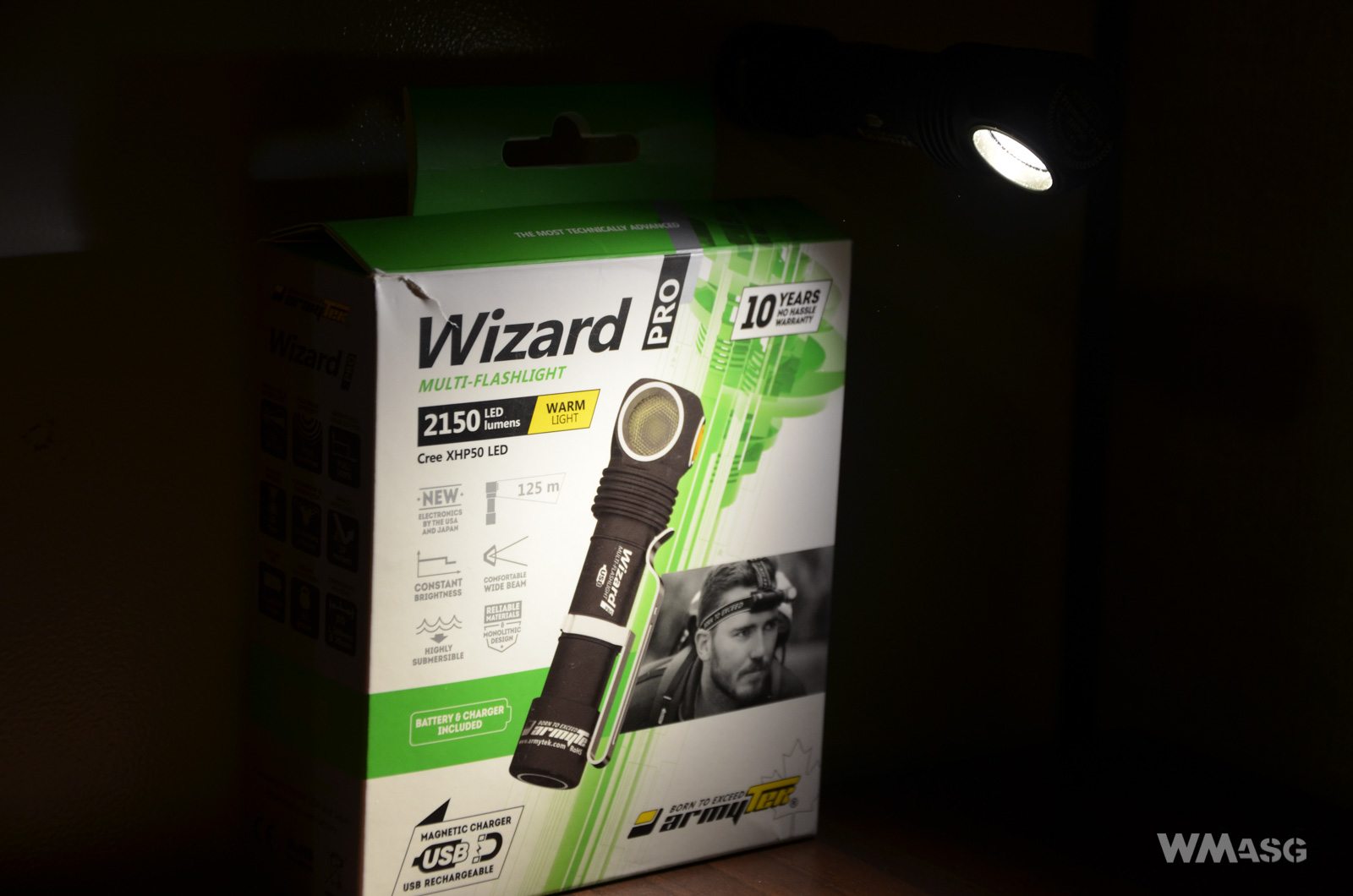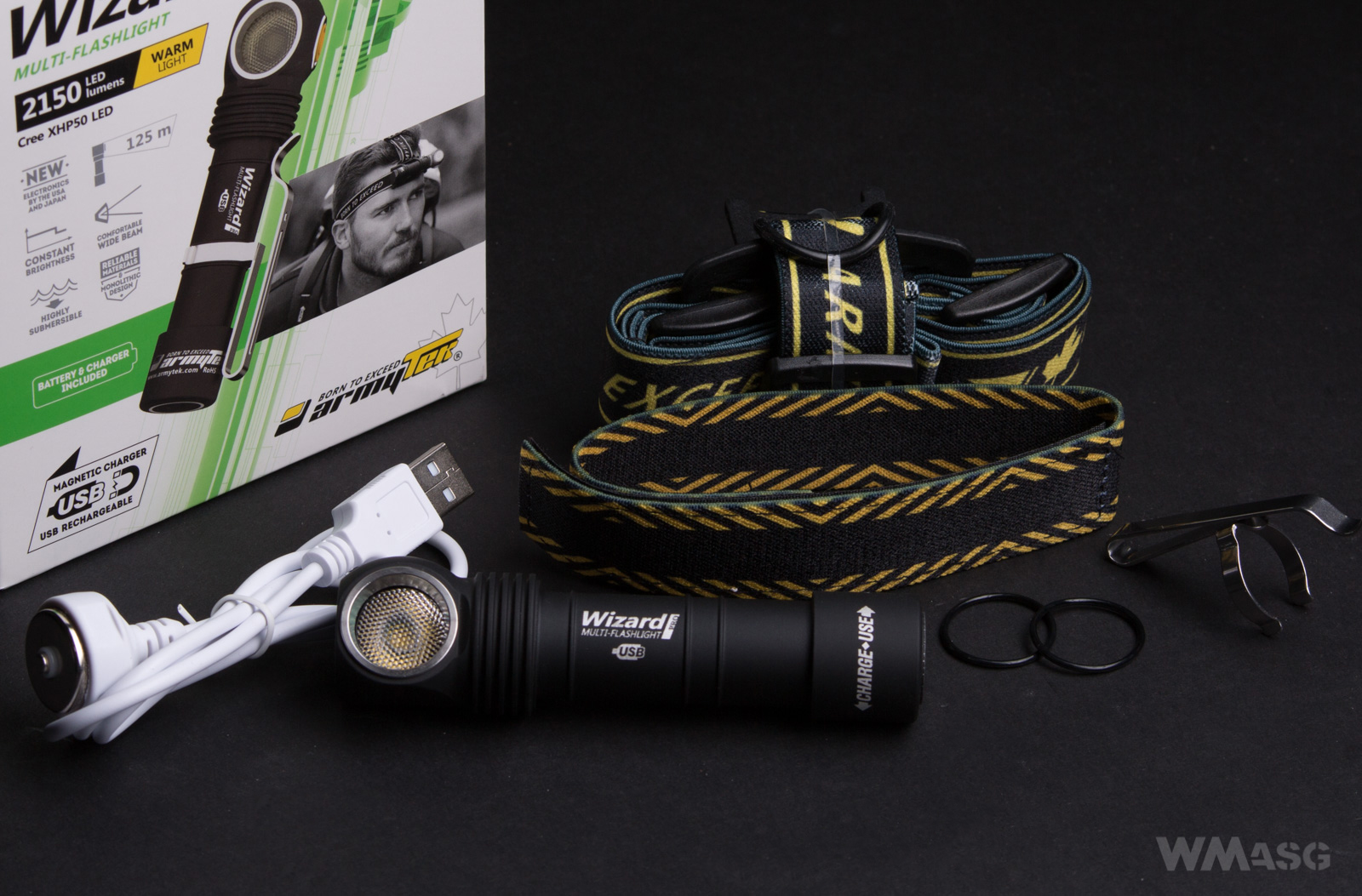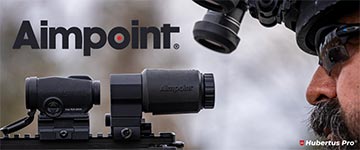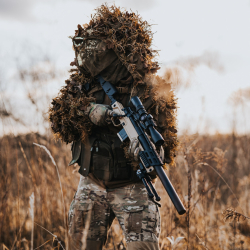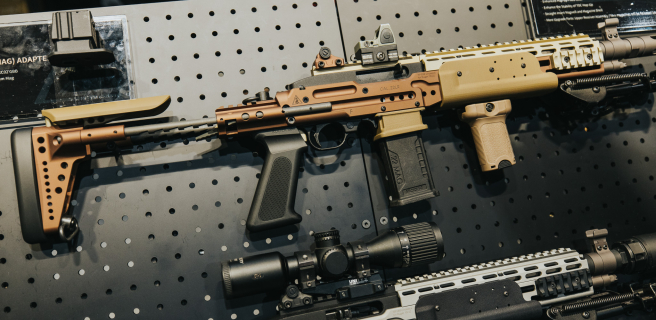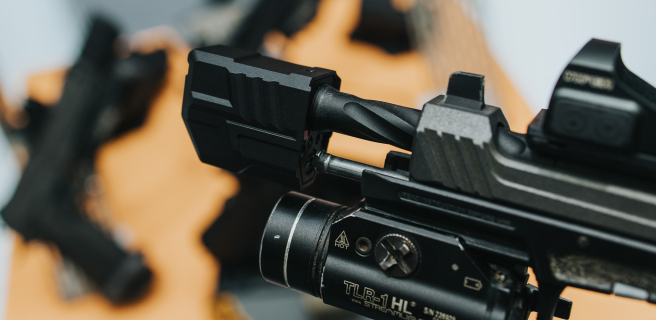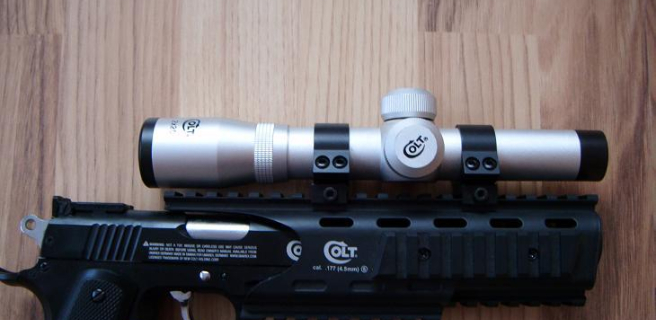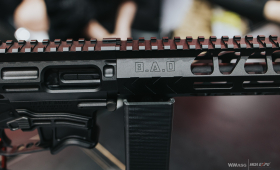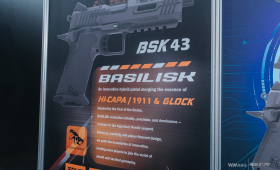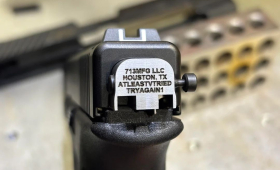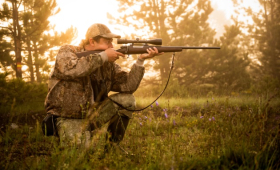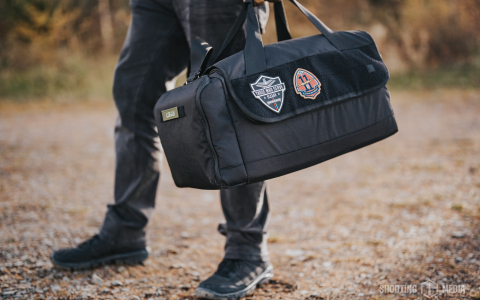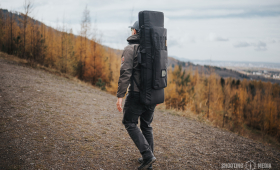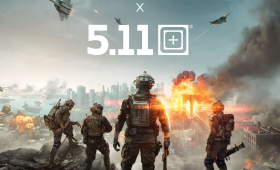USABILITY IN THE FIELD
I had the opportunity to test the flashlight in the conditions of improvised airsoft games: in CQB and night conditions in a forest area.
In the CQB conditions, the two modes used the most were the Turbo 2 (or 1675 lumens) and the Strobe 3 (1675 lumens, 10 Hz). I used the flashlight both on thr head mounting and on the clip (attached to the gear). Most of the time, the Wizard was switched into a strobe mode, which was worth switching on during open fire exchanges. In an airsoft fight at close range, camouflage is much less important than in forest or night games. The flashlight turned on during the contact with the opponent could not harm the user, while a strong beam of light made it difficult for the opponent to properly aim which, in a firefight, provided additional fractions of seconds for reaction.
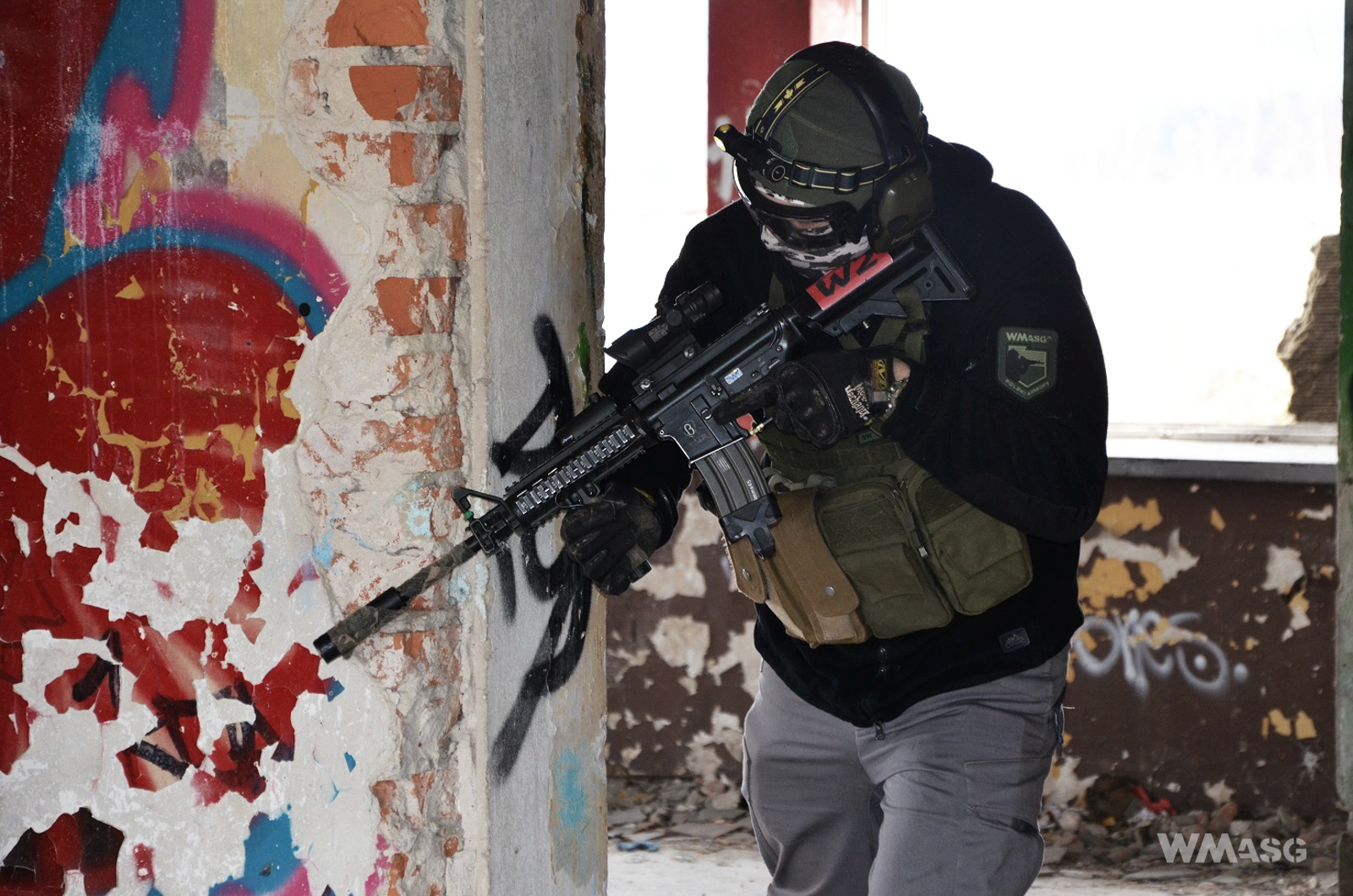
The strongest mode of continuous lighting is particularly useful when moving around heavily shaded rooms. A luminous flux of such a high value not only perfectly illuminates the interior of the rooms (and it does at a fairly large angle), it is also quite good at discouraging others from looking towards the light source. The only disadvantage of the Wizard programs in the airsoft CQB is that switching between groups of turbo and strobe modes requires a few clicks (three for Turbo, four for Strobe). Fortunately, the driver remembers the lastly used modes in these groups.
Due to the need to turn the head frequently in airsoft CQB conditions (e.g. when checking several rooms in succession), I dare say that in this application the head mounting works best.
Also, the momentary lighting function can be used in CQB games, but its sensible use may require using a sidearm replica. This mode is useful in a situation in which the player expects an opponent in a completely dark room. Using this mode they can lit it for a fraction of a second and the possible opponent can be eliminated with a pistol replica. Turning the momentary lighting function on and off lasts no longer than two seconds, but requires the use of both hands.
A frequent problem in the aforementioned competition products is the possibility to damage the lens of the flashlight in case a BB hits it (a thing well-known to owners of both flashlights and collimator sights). The Armytek Wizard lens is relatively small, but during intense games there is still a reasonable chance of breaking the optics. It is worth thinking about additional lens protection if the flashlight is to be used mainly in this role. The additional protection may, however, cause inferior heat dissipation and, as a result, cause overheating of the equipment, which certainly will not be beneficial for it, especially in the most powerful lighting mode.
Even more benefits than for airsoft CQB enthusiasts, the Armytek Wizard Pro flashlight can bring to players focused on mil-sim games and all activities after dark. In this environment, virtually any continuous lighting mode can benefit the user and his entire team.
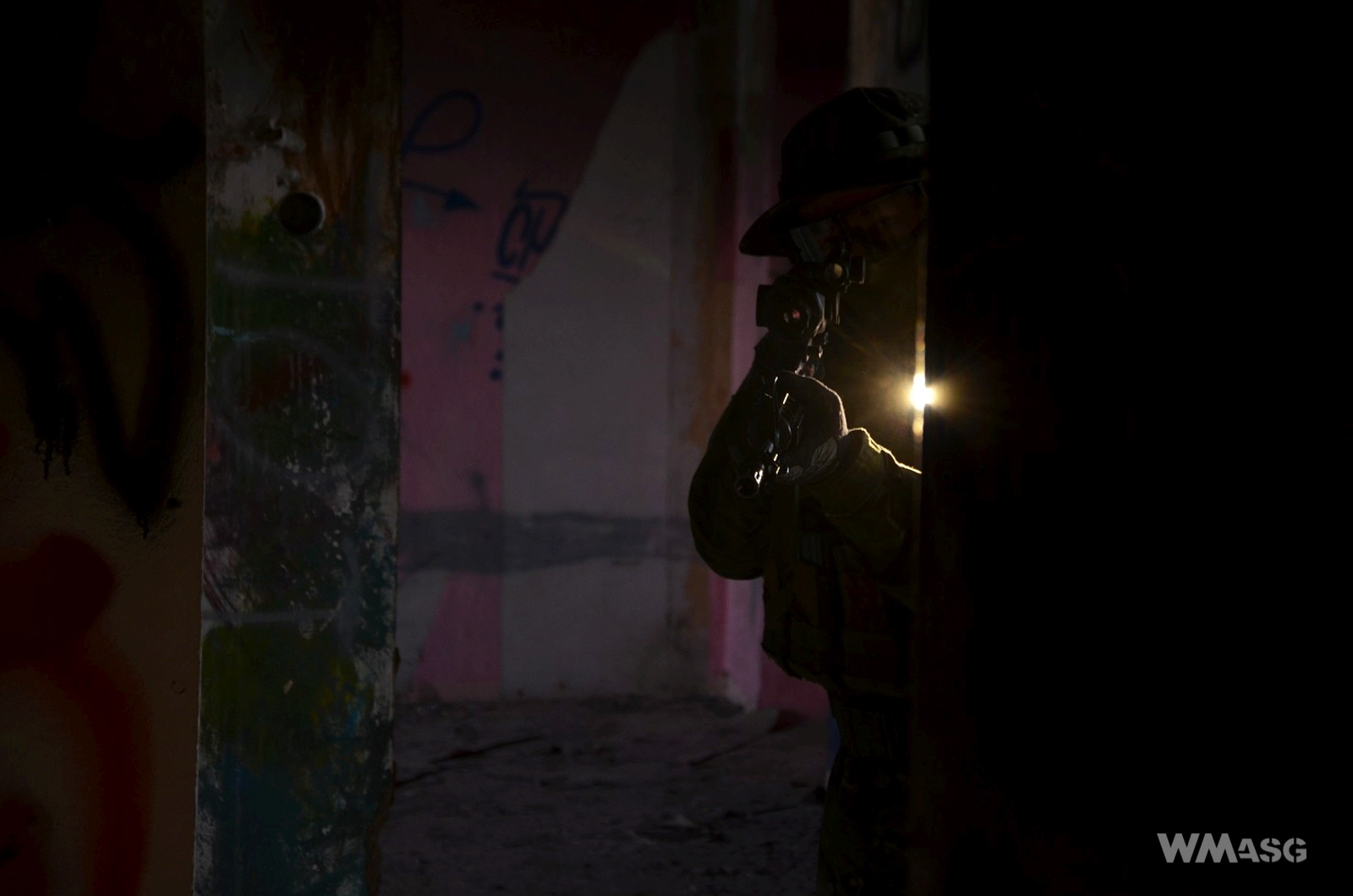
At night, in woodland conditions, I used both head mounting and assembly clip. In this case, the convenience is solely dependent on user preferences, although the clip gains an additional meaning. The Wizard is still so light that during the two-hour march you could not feel the discomfort of wearing it on my head. Many players, however, use night vision systems, which not only weigh much more, but they often take up enough space on the head to prevent simultaneous use of a headlamp. Someone may ask: why use a torch if you have night vision? Of course, you cannot deny here the usefulness of advanced night vision devices, but many of their users (including myself) will agree with the statement that in some situations the use of white light is much more convenient. In this situation, the possibility of installing a light source on your equipment is extremely valuable. However, to prevent an equally valuable flashlight to be lost in an unfamiliar area, it is worth considering additional protection (even with an insulating tape) when using it on a clip.
The advantages of Armytek's flashlight appear already during activation of the weakest of modes, which is only fourteen hundredth of lumen! This is a value sufficient to check a map or to inspect your own equipment quickly, without unnecessarily revealing your position. In this mode, the torch illuminates objects located no more than a few dozen centimeters away. The glow on the optics is as dim as the rhythmically flashing diode informing about the state of charge of the battery (the diode always flashes when the torch is on).
The next mode, 1.4 lumen, works well in a situation where the user wants to illuminate only the road under his feet (if the flashlight is mounted on the head). In the absence of residual light and moving off the trail, it simply allows you to "not kill yourself" by illuminating the next few meters.
The strongest mode from the "FIREFLY" group has 5 lumens. It is a value that is enough to comfortably move freely when you do not care about the surroundings. It can also illuminate the inside of the tent to a sufficient degree.
The "Main" modes group, from 28 to 363 lumens, works well when the camp is being set up, or when comfortably and dynamically moving around the game area, when the probability of contact with the opponent is low. These modes allow for observation of the environment from a few to about 30 meters away. While the 28 lumens mode allows you not to worry about the energy supply (on the battery that comes with the set is enough even for two days of continuous lighting), in the case of stronger modes you should already consider the possibility of discharging the battery.
Moving to the "Turbo" group, I used the strongest mode, that is 1675 lumens, almost exclusively. It perfectly illuminates the area at a distance of several dozen meters. This mode works well for both searching through an area, if necessary, moving fast when the probability of contact with the opponent is high. In a favorable terrain, it can allow to detect an opponents before entering the range of their replicas. The flashlight in this mode can get warm very quickly, so it is not possible for using this mode for longer periods of time.
Finally, the strobe modes also have their uses. The 1675 lumens 10Hz mode can be used to hinder enemy's aiming or to counteract night vision. Further, it gets even more interesting: both 1Hz strobe modes are very useful. The first, weaker one (153 lumens), works great as a marker. In turn, the second, stronger one (1675 lumens), can act as an automatic detector: mounted in the right place it will not let you not let your opponent get closer unnoticed, will not encourage them to use night vision and, at the same time, will provide a much longer operation time than the most powerful mode of continuous lighting.
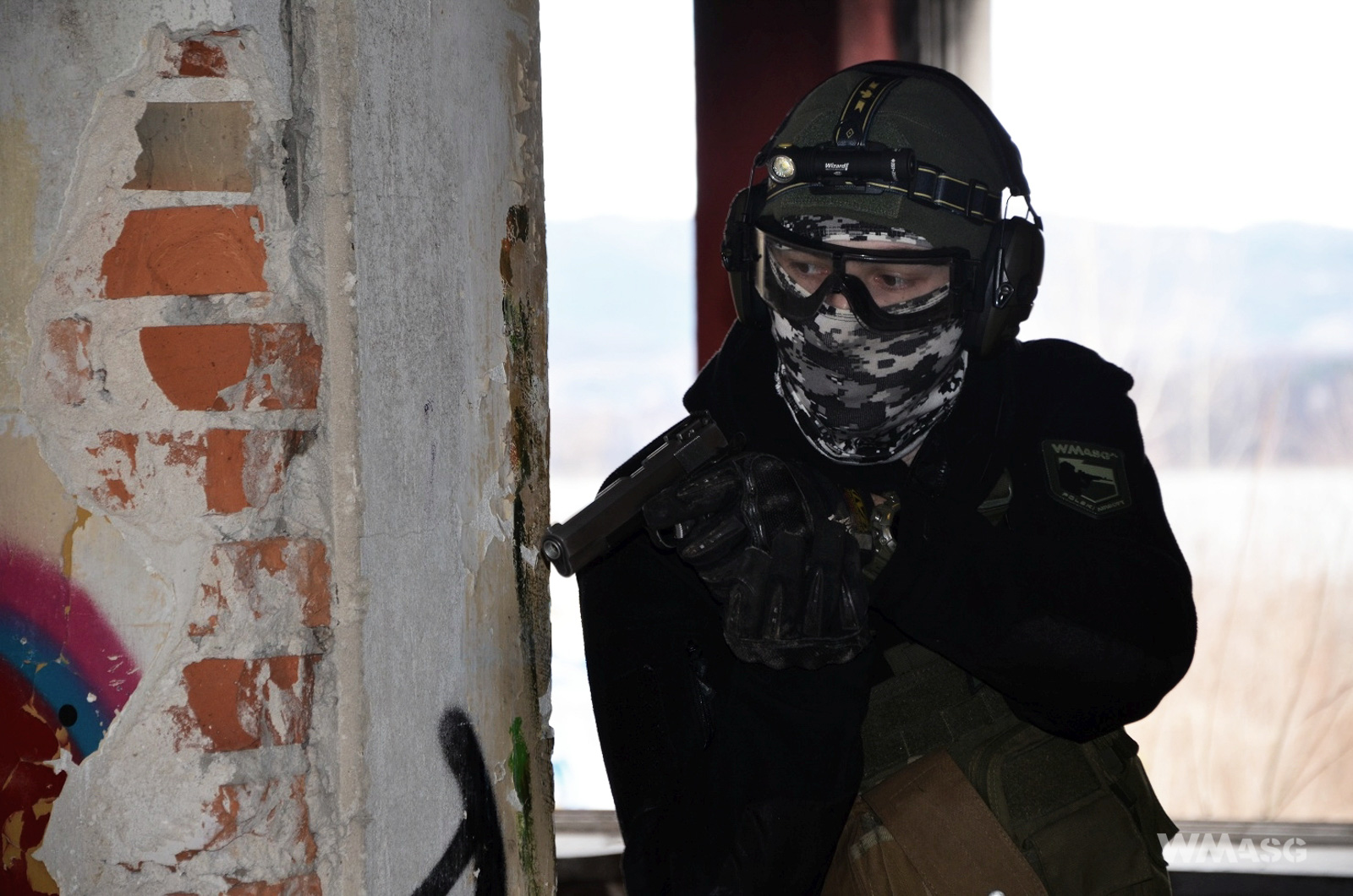
So much for the superlatives. The momentary lighting function was not useful for me during the night in the woodland area and the yellow and black assembly straps are not very "tactical" and look average on the photos. What a hopeless flashlight this is.
SUMMARY
Seriously. If MacGyver ever switched from pocketknives to flashlights, Armytek Wizard Pro would land in his pocket.
This headlamp/angle flashlight should meet the expectations of even the most demanding people. A multitude of functions, goodies and a partial programming option allow you to adapt the Wizard Pro flashlight to various situations and roles: from EDC to tactical applications.
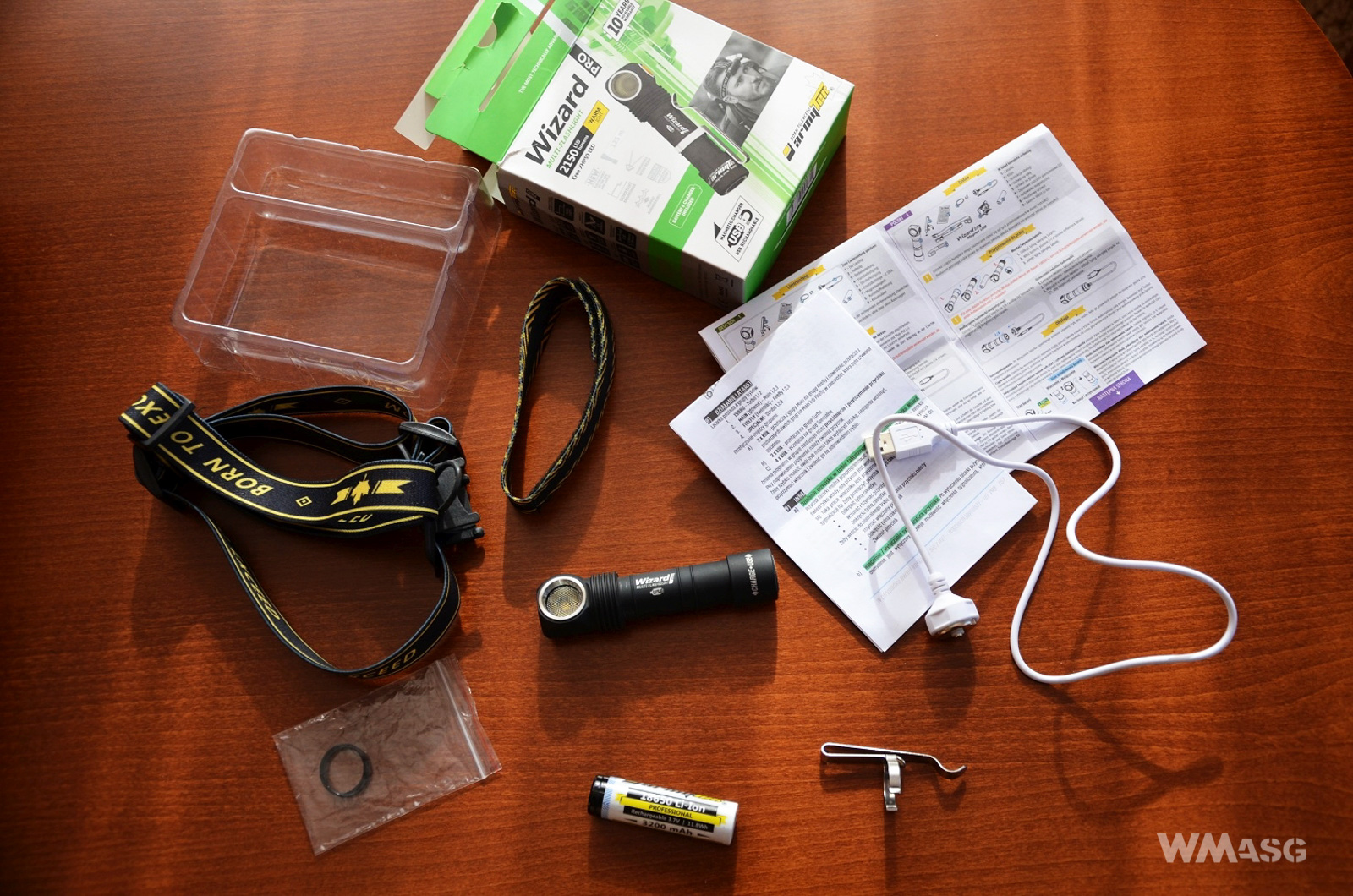
Of course, at some point, the user may ask, "Do I need so many lighting modes?" He/She may not, but if they are there already and, in addition, it is not necessary to switch each time through the whole cycle ... why should there be less of them? Perhaps the day will come when this one mode, which has never been used before, will prove to be invaluable.
Okay, because I'm starting to unnecessarily broaden my interpretation. The fact is that the Armytek Wizard flashlight charmed me.
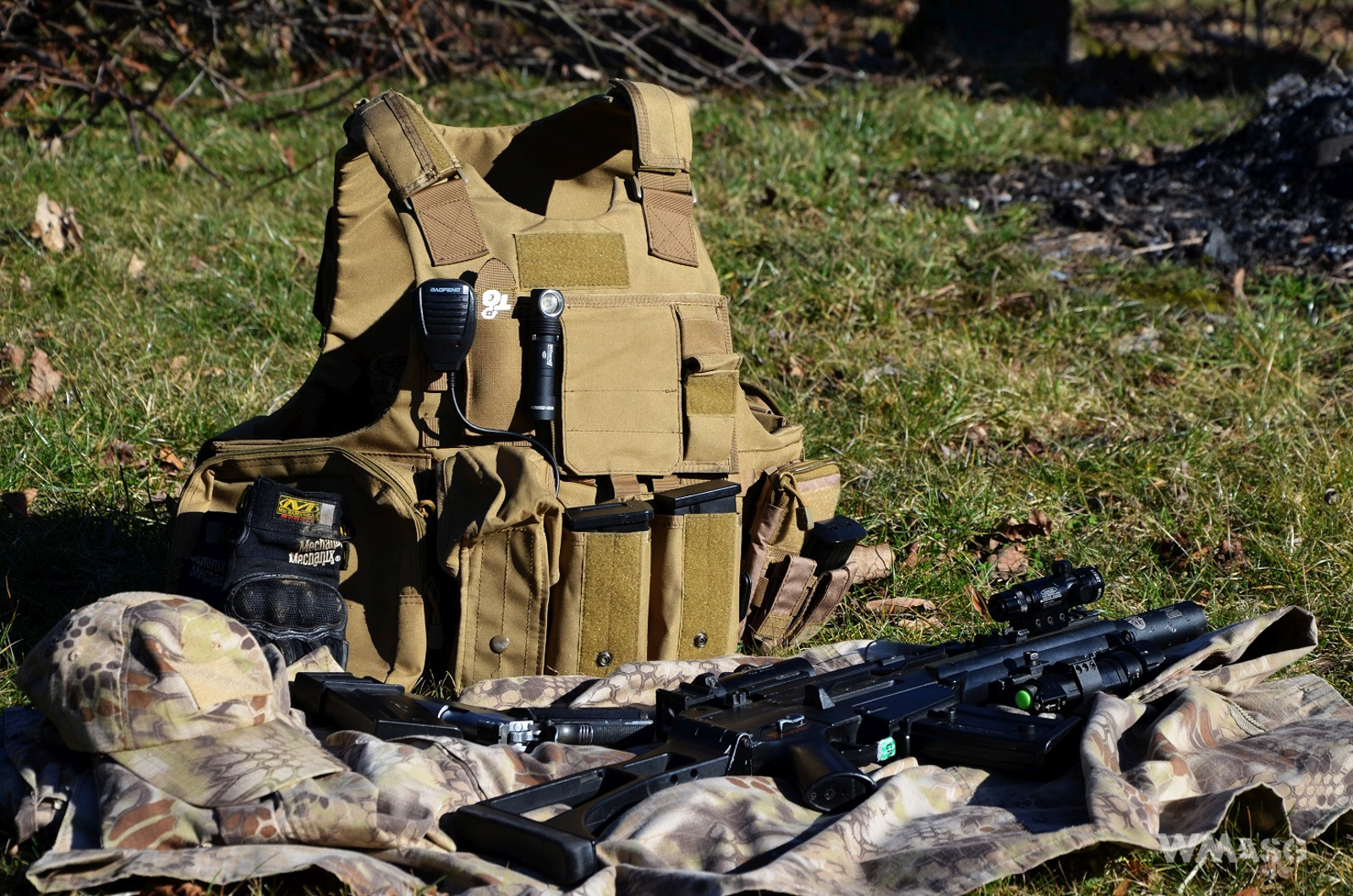
In all this bunch of smaller or larger advantages, the sky-high (as for airsoft conditions) immune standards and a dozen or so modes of operation, I must admit that this product lacks one function: a red signaling light. Then the Armytek Wizard would have legitimate ambitions to become the only headlamp that the demanding airsoft players would need during the night games. Because there is no such function, you need an additional flashlight, band, marker, or anything else with a pulsating red light to inform everyone that you were eliminated from the game.
Do not get me wrong - I do not wish anyone to have used a red, pulsating light too often.
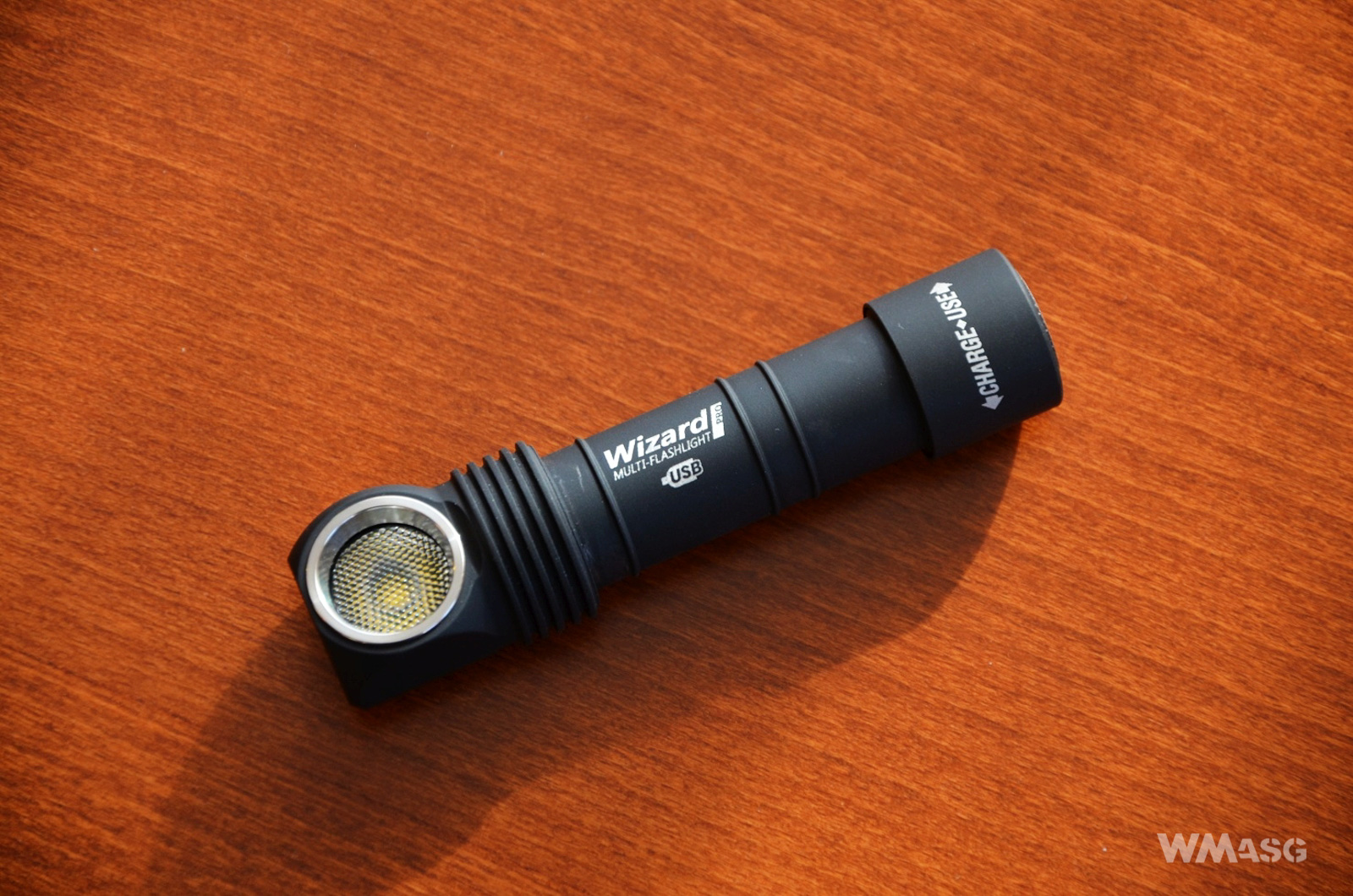
I can safely recommend the Armytek Wizard Pro USB Warm flashlight to every demanding fan of not only night games, but also airsoft CQB. Certainly, there will also be several applications for this product in everyday life, at home or at work, or on tourist trips. This equipment looks good on paper and also works in reality.
We would like to thank <u>High Value Targets - Wojciech Jagielski - </u><u>armytek.com.pl</u> - the official distributor of Armytek flashlights, for providing the flashlight for testing.
Pros:
- quite an attractive price;
- sky-high immunity standards (for airsoft conditions);
- a wide set of accessories;
- a multitude of functions;
- using groups of modes;
- a standard power supply;
- small dimensions and weight;
- a powerful luminous flux;
- a clear and comprehensive instruction manual;
- long warranty.
Cons:
When I started to review this flashlight, there were a few notes about its defects (e.g. complicated operation). However, with each subsequent day of playing with the Wizard, I was slowly realizing how well everything in this flashlight was thought through. However, in order to have a clear conscience, I left a few cons:
- it is not possible to use the clip and head mounting simultaneously;
- yellow-black head mounting straps do not look "tacticool";
- no red light mode;
- and that's basically it ... writing about any other defect hare would be a hard-pressed move.
